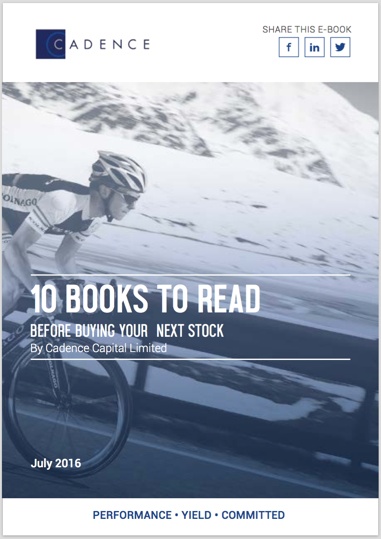This article was written by Karl Siegling and originally published in 'Morningstar'.
5 traps in using the PE metric
This is the first of our articles on fundamental analysis and we will focus on the price-to-earnings ratio (PE). The reason for focussing on this ratio first is that it is so widely quoted by the broking, investment banking and investment community.
Simplistically, we divide the price of a share by the earnings per share (EPS) or the market capitalisation of a company by the net profit after tax. For example, a $2.00 share price divided by EPS of say 20 cents represents a PE ratio of 10.
Early on we are taught that, theoretically, this means that if we were to buy this company today it would take 10 years to earn back our investment.
Of course, with all theories the reality is quite different. Perhaps the most troubling part of this theory is that when you buy a share you have to pay with cash or a version of cash. The earnings that you receive in return for your cash … are not necessarily cash.
The biggest and by far the most dangerous component of the PE ratio is that the earnings are the accounting earnings as defined by the accounting standards for a particular country. These earnings are not the cash earnings of the business.
In fact, many companies listed on the Australian Securities Exchange (ASX) earn no cash despite reporting profits.
A second problem with the PE assumption is that future earnings will be at least what they are currently. In the case of a company trading on a 10 times PE ratio, we as investors are taking a chance that earnings will be at least what they are today for the next 10 years!
Working as an investor in the industry, it is quite clear that estimating the earnings of a company listed on the ASX for a year or two into the future is extremely difficult, let alone 10 years into the future.
A third problem with the PE ratio is the idea that 10 times earnings is cheaper than 15 times earnings. The assumption that a company will earn its current earnings for the next 10 years and an investor will get their money back is of course theoretical.
A company’s earnings may well go up significantly or down significantly over the next 10 years. It would follow that we as investors should prefer to own a company whose earnings go up significantly over the next 10 years rather down significantly. The PE ratio has no way of telling us what will happen!
A fourth problem with the PE ratio is that it tells the investor nothing about a company’s balance sheet. It may be that a company trading on a 2 times PE multiple is actually incredibly expensive since the company has a very large amount of current debt that it has no way of paying, and as a consequence, the company will be declared bankrupt in the current financial year.
We need only look back to the recent global financial crisis to find many examples of companies in exactly that situation.
A fifth problem with the PE ratio is that it tells us nothing about the quality of a company’s earnings. We may look at one company trading on 8 times earnings and declare it cheaper than a company trading on 16 times earnings.
We often hear conversations along these lines. However, upon closer inspection we discover that the company trading on 8 times earnings has just had a one-off profit never to be repeated and that the company on 16 times earnings has displayed 20 per cent per annum earnings growth for the past 15 years.
It may well be that once these factors are taken into account, the company on a 16 times PE multiple is actually a better investment than the company on 8 times.
The list of problems associated with the PE ratio goes on and on. For the time being, let’s restrict our discussion to what may be the top five problems associated with the PE ratio and promise ourselves that we will never look at the PE multiple again as a serious tool for fundamental analysis.
In our next article on fundamental analysis, we will focus on another seriously flawed valuation metric – dividend yield. As a precursor to the article, I would suggest that investing based on dividend yield may, in some circumstances, actually be more damaging than investing in a company based on the PE ratio.

